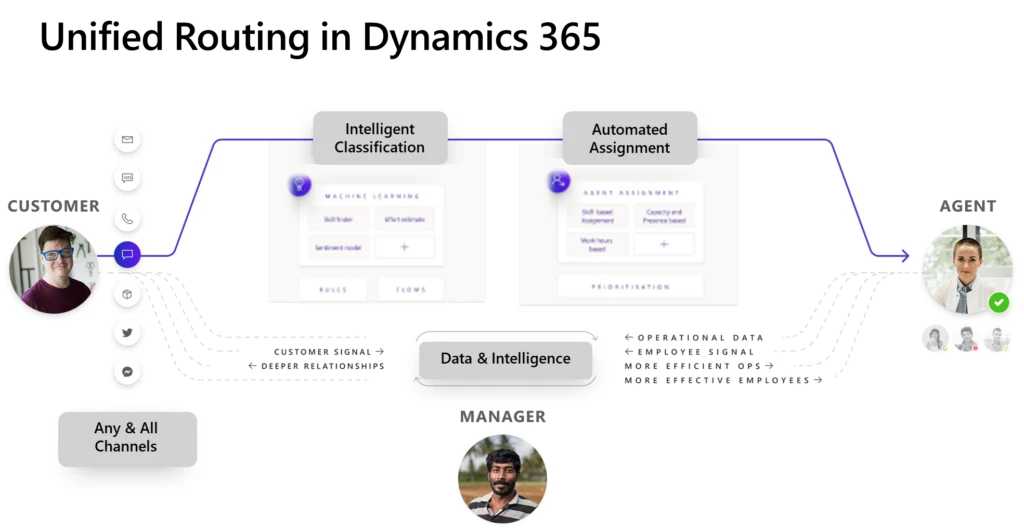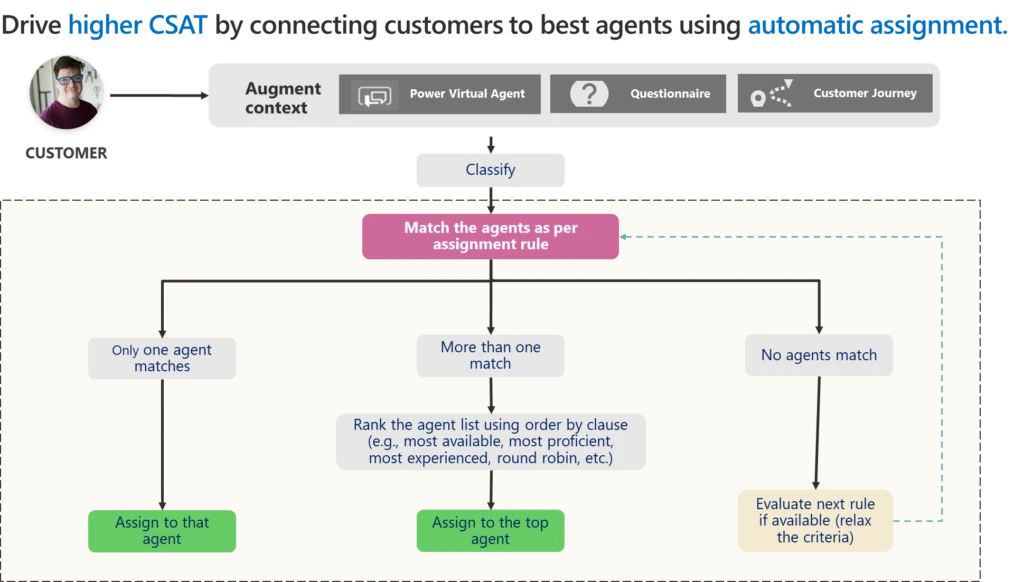This article is contributed. See the original author and article here.
Automatic assignment of incoming service requests is one of the most powerful capabilities of unified routing, benefiting customers as well as agents and management. A common customer pain point is waiting for a long time to reach an agent, only to find out that the agent is unable to solve the issue. Precise automated assignment directly impacts key KPIs like first call resolution, customer satisfaction, and agent satisfaction. On the management side, the system can determine the best agent to assign to a case, removing the need for supervisors to constantly monitor queues.
How automatic assignment works
To assign incoming service requests from all channels to the best-suited agent, unified routing evaluates the following information until it finds a match:
- Static characteristics of the agents, such as skills, proficiency, working hours, and location
- The dynamic characteristic of real-time capacity
- Aspects of the incoming work, such as answers to pre-chat questions, virtual agent interactions, customer journey context, and required skills

Unified routing first looks at the incoming service request and any responses to bots, IVR, pre-chat surveys, and so on, and classifies or “enriches” the service request using machine learning models or logical rules. This step helps in identifying details like incident category, severity, and priority; determining the best support center from the customer’s location; and recognizing related records.
Next, the system uses the enriched information to find the most appropriate agent, as expressed in terms of assignment rules. Unified routing supports multiple assignment rules, executing them one after another until a suitable match is found. Matching can produce three results:
- Only one agent matches all the criteria. The system assigns the work to the agent.
- Multiple agents match the criteria. The system ranks them against one another, based on their capacity, proficiency, or experience, or simply assigns them in a round robin fashion.
- No agents match the criteria. The system provides an option to relax the criteria, or constraints. We call this “gradual relaxation of constraints.” Unified routing evaluates the next matching expression, repeating the process until at least one agent matches.

What happens if the automatically assigned agent rejects the assignment or isn’t available? The system tries to reassign the work on its own, supplemented by supervisor intervention, when needed. Unified routing respects the supervisor’s assignment, so if a supervisor wants to step in and assign work to an agent, they can always do so.
With automatic assignment, unified routing helps improve CSAT while lowering the total cost of ownership, removing the need for constant queue supervision.
Related links and more reading
This blog post is part of a series of deep dives that will help you deploy and use unified routing at your organization. See other posts in the series to learn more.
The post Improve CSAT by connecting customers to agents using automatic assignment in unified routing appeared first on Microsoft Dynamics 365 Blog.
Brought to you by Dr. Ware, Microsoft Office 365 Silver Partner, Charleston SC.


Recent Comments